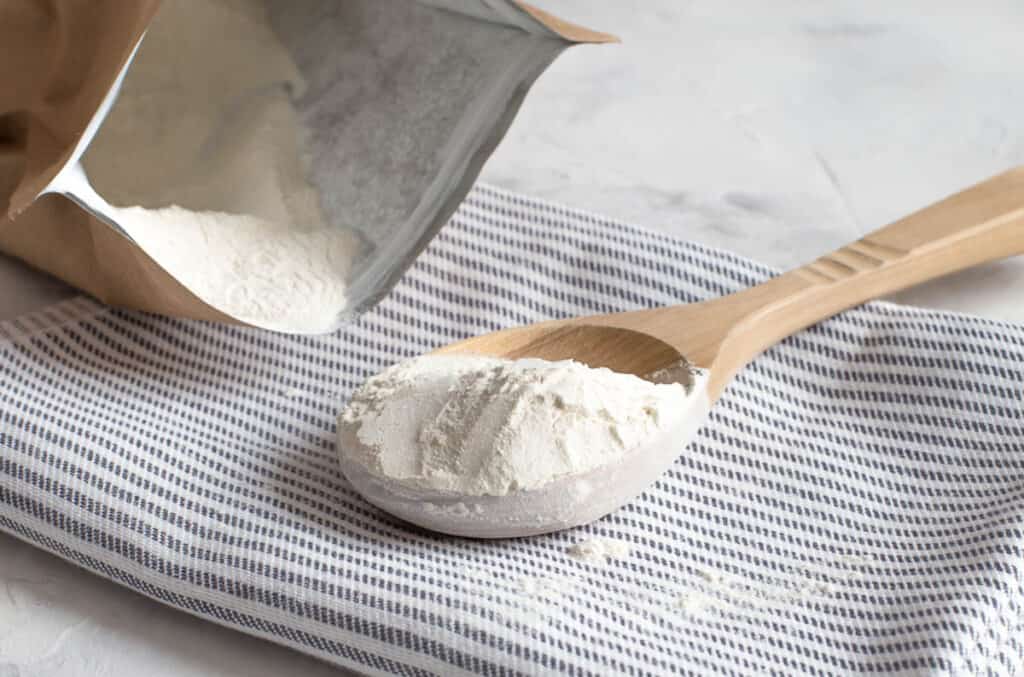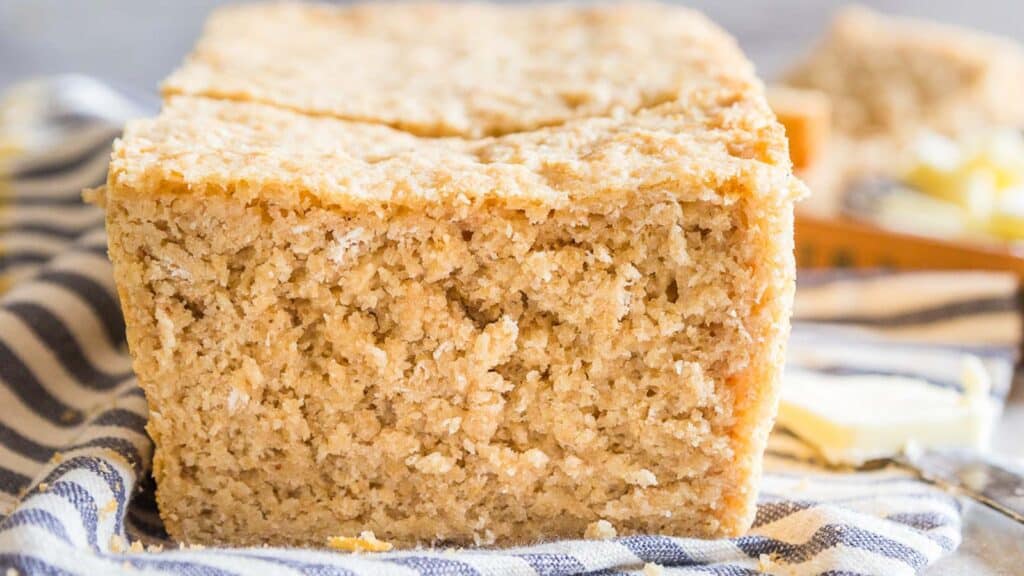Xanthan gum is a popular kitchen ingredient, giving everything from sauces to gluten-free baked goods a nicely thickened consistency. But what if you’re out of it or can’t use it for health reasons? Here are the best xanthan gum substitutes and how to use each.

What is xanthan gum, and what does it do?
Before discussing the best substitutes for this ingredient, it’s essential to understand what it is and its role in the kitchen. Xanthan gum is made by fermenting corn sugar with a bacterium. This is its distinguishing feature compared to other gums like guar or gellan. The bacteria Xanthomonas campestris ferments the glucose in the corn sugar to create the final product.
You may think of xanthan gum only as good for thickening, but in fact, it has a few other uses as well, including acting as an emulsifier and binder. Because of these functions, it’s commonly used in sauces, gravies, soups, stews, baked goods and smoothies.
“In my low-carb lifestyle, Xanthan gum is a big part of flour substitution. I use it as a thickening agent for various recipes. Just a pinch can thicken the sauce into the consistency you have dreamed of. Adding gum into low-carb gnocchi mix allows me to manipulate the dough into perfect shapes with the texture of traditional gnocchi.”
— Zuzana Paar, Lowcarb-Nocarb
The best xanthan gum substitutes
What happens when you run out, don’t have it on hand or just don’t want to use this ingredient? Luckily, there are quite a few xanthan gum substitutions that you likely have on hand to replace it.
Cornstarch
Almost everyone has a container of cornstarch in the pantry, making it the most popular substitution for xanthan gum. Since cornstarch is derived from corn, it’s also 100% gluten-free, like xanthan gum. However, check labels, as contamination is possible if the brand doesn’t specifically show a gluten-free certification. Cornstarch is just as effective as xanthan gum as an emulsifier and a thickener and can be used in a 1-to-1 ratio.
Chia seeds
Chia seeds have long been used in vegan baking as an egg replacer when soaked in water, but the resulting chia gel is also quite helpful as a xanthan gum replacement. Because chia seeds plump up when soaked, creating a texture that might not be pleasant in your final dish, it’s best to grind them first. Add two parts water to one part chia seeds and let the mixture rest for 10 to 15 minutes to form the thickened gel. This gel can then be used in a 1-to-1 ratio for xanthan gum. Ground chia seeds are also great for thickening jams without the need for pectin.

Flax seeds
Like chia seeds, ground flax seeds create a thick paste when combined with water. The seeds must be ground to thicken correctly. Your body also can’t absorb any of the nutrients of the whole seeds, so buying the ground version or doing it yourself at home is a must. Unlike chia seeds, flax gives off a nutty flavor and gritty texture, so bear that in mind when using it as a xanthan gum substitute. Ground flax seeds should follow the same 2-to-1 water-to-seed ratio as chia to thicken. They can be used in a 1-to-1 capacity when swapping out for xanthan gum.
Psyllium husk
This ingredient is popular for its use in digestive aid products. Because it is an insoluble fiber — one that does not break down in the body — the gel-like consistency it forms with water also makes it a great replacement ingredient for xanthan gum. Use psyllium husk in a 2-to-1 ratio for xanthan gum.
“I use a lot of xanthan gum as a gluten-free baker, but I have found that some people cannot process it as well. When I need a xanthan gum substitute, I often turn to psyllium husk. It binds things together just as well as gum, especially in baked goods that need a lot of structure like bread and
— Ksenia Prints, At the Immigrant’s Tablepizza , but it’s a lot softer on the stomach.”
Gelatin
Unflavored gelatin is derived from animal collagen and makes an excellent substitute for xanthan gum in baking products like bread and muffins. If the gluten-free flour you’re using doesn’t contain xanthan gum and a recipe calls for it independently, switching to gelatin is an easy swap. Since gelatin is animal-derived, this substitute is unsuitable for vegetarians or vegans. You’ll need to use two parts of gelatin for every part of xanthan gum.
Egg whites
This substitute is even more common in your house than cornstarch, but its uses are a little more specific. Egg whites are best used as a substitute for xanthan gum when the final product is supposed to be light and airy, such as a quick bread or cake. You don’t necessarily want to whisk egg whites into a gravy or soup. One egg white will replace a tablespoon of xanthan gum in a recipe.

Arrowroot starch
Sometimes referred to as arrowroot powder, this starch acts incredibly similar to cornstarch and tapioca starch. Arrowroot comes from the roots of tropical plants, which are dried and ground into a fine powder. This ingredient is popular in gluten-free cooking and among people looking for a more nutritious option to cornstarch, as arrowroot has a higher fiber content. If you’re swapping out cornstarch for arrowroot, you’ll want to use twice as much to get the same thickening capacity.
Tapioca starch
Tapioca comes from the root of cassava, a plant native to South America that’s often used to make a creamy mash and also goes by the name yuca. Tapioca is sold in many different forms, including pearls, flour and flakes, but starch is what you’ll want if you use it as a xanthan gum substitute. It functions like arrowroot in that you’ll want to use twice as much as cornstarch when thickening liquids.
The bottom line
Xanthan gum is everywhere, from your favorite beauty products to the food on your plate, thanks to its magic touch with thickening and blending. But if you’re out of it or just not into using it, no sweat — there are loads of xanthan gum substitutes to try. Just remember what you’re making and any food rules you’re following to pick the best swap that’ll make your dish turn out just right.
Gina Matsoukas is the writer, photographer and recipe creator of Running to the Kitchen. Focusing on healthy, seasonal, whole-food recipes, her work has been featured in various online and print publications including Food Network, Prevention Magazine and Women’s Health. Gina lives in central New York, where she enjoys an active outdoor life.